Technical Tools |
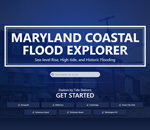 |
Maryland Coastal Flood Explorer
Maryland DNR hosts the Maryland Coastal Flood Explorer tool that is used for visualizing current, historic, and future flooding in the coastal zone. This tool is built using local elevation data and provides Maryland planners and communities with visualizations of the UMCES Sea Level Rise projections and integrates other local useful datasets. |
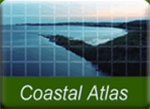 |
Maryland Coastal Atlas
Maryland Department of Natural Resources
The Coastal Atlas is an online mapping and planning tool that allows decision-makers to visually analyze and explore data for coastal and ocean planning activities. |
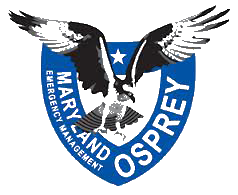 |
Maryland Emergency Management Agency (MEMA)
OSPREY: The Operational and Situational Preparedness for Responding to an Emergency tool is Maryland's answer to the questions both public safety decision-makers and the public ask in times of severe weather or other emergencies - "What's happing around me?" and "What can I do about it?" This is commonly known as "situational awareness." The OSPREY suite of tools contains many sources of real-time data such as closed-circuit TV cameras, weather and power outages. |
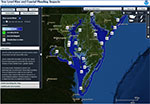 |
Sea Level Rise and Coastal Flooding Impacts Viewer
NOAA Coastal Services Center
Creates maps of potential impacts of sea level rise along the coast and provides related information and data for community. |
|
U.S. Climate Resistance Tool Kit - CanVis Visualization Program
The CanVis tool offers coastal managers the opportunity to visualize future changes related to sea level rise, storm surges, and flooding. The free visualization software, developed through a collaboration between the U.S. Department of Agriculture and NOAA, is easy to use and is compatible with most computers. |
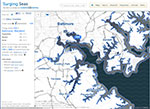 |
Surging Seas
Climate Central
An Interactive map tool showing sea level rise down to the neighborhood. Provides statistics of population, affected homes and land as well as links to fact sheets, action plans and more. |
 |
Coastal County Snapshots
NOAA Coastal Services Center
Coastal County Snapshots assess a county’s exposure and resilience to flooding by turning complex data into easy-to-understand stories, complete with charts and graphs. |
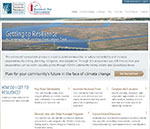 |
Getting to Resilience: A Community Planning Evaluation Tool
Jacques Cousteau National Estuarine Research Reserve / The Barnegat Bay Partnership
Online self-assessment tool to assist communities in reducing vulnerability and increase preparedness by linking planning, mitigation, and adaptation. Provides links to Community Rating System. |
State |
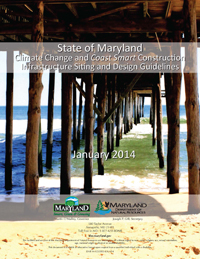 |
 Maryland Coast Smart Council - Coast Smart Construction Program (2020) Maryland Coast Smart Council - Coast Smart Construction Program (2020) |
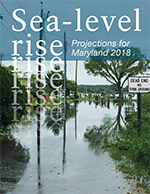 |
 Report: Updating Maryland’s Sea-level Rise Projections (2018) Report: Updating Maryland’s Sea-level Rise Projections (2018) |
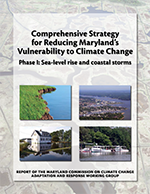 |
 Comprehensive Strategy for Reducing Maryland's Vulnerability to Climate Change: Phase I, Sea Level Rise and Coastal Storms (2008) Comprehensive Strategy for Reducing Maryland's Vulnerability to Climate Change: Phase I, Sea Level Rise and Coastal Storms (2008) |
 |
 Comprehensive Strategy for Reducing Maryland’s Vulnerability to Climate Change: Phase II, Building Ecological, Economic and Social Resilience (2011) Comprehensive Strategy for Reducing Maryland’s Vulnerability to Climate Change: Phase II, Building Ecological, Economic and Social Resilience (2011) |
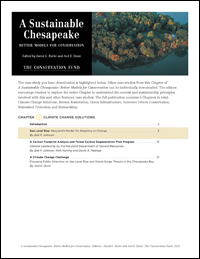 |
 Sea Level Rise: Maryland's Model for Adapting to Change (2010) Sea Level Rise: Maryland's Model for Adapting to Change (2010) |
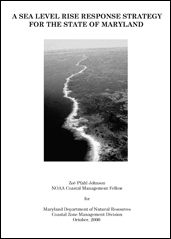 |
 A Sea Level Rise Response Strategy for the State of Maryland (2000) A Sea Level Rise Response Strategy for the State of Maryland (2000) |
Local |
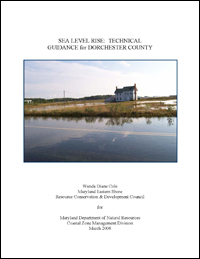 |
 A Sea Level Rise Response Strategy, Dorchester County, Maryland (2008) A Sea Level Rise Response Strategy, Dorchester County, Maryland (2008) |
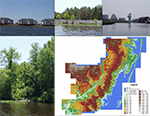 |
 Sea Level Rise Response Strategy, Worcester County, Maryland (2008) Sea Level Rise Response Strategy, Worcester County, Maryland (2008) |
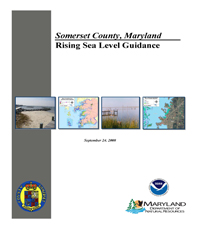 |
 Rising Sea Level Rise Guidance: Somerset County, Maryland (2008) Rising Sea Level Rise Guidance: Somerset County, Maryland (2008) |
Videos |
 |
Forecasting Sea Level Rise for Maryland
Maryland SeaGrant
Video detailing the
Updating Maryland Sea-Level Rise Projections report and provides an understanding of how the projections were derived. |
Reports |
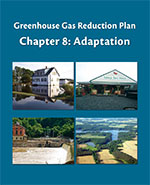 |
Greenhouse Gas Reduction Plan, Chapter 8: Adaptation
Maryland Climate Change Commission
This report is a graphically enhanced version of Chapter 8 of Maryland’s Greenhouse Gas Reduction Plan. It provides an update on adaptation strategies in Maryland. |
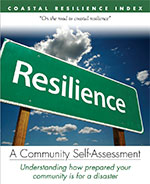 |
Coastal Resilience Index
Mississippi-Alabama Sea Grant Consortium
A self-assessment to provide community leaders with a simple method for predicting if their community will reach and maintain an acceptable level of functioning after a disaster. |
Trainings |
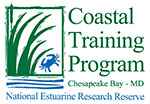 |
Coastal Training Program, Chesapeake Bay-MD
Maryland Department of Natural Resources / National Estuarine Research Reserve
The Coastal Training Program provides science-based knowledge to community leaders and decision makers to promote clean and healthy streams, rivers, and watersheds of the Chesapeake Bay. |
Useful Links |
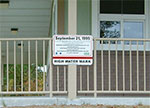 |
High Water Mark Signs
National Weather Service
To help raise awareness of flood risk, NWS began a project in 2006 to install High Water Mark signs in prominent locations within communities that have experienced severe flooding. Locations are selected based more on visibility than location of the flood. For example, a sign might be placed on the wall of a building downtown rather than near a rarely visited riverbank. |
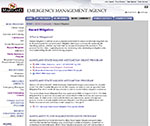 |
Hazard Mitigation Grant Program
Federal Emergency Management Agency (FEMA)/MEMA
The Federal Emergency Management Agency’s (FEMA’s) Hazard Mitigation Grant Program (HMGP) provides grants to States, local governments, and Indian tribes for long-term hazard mitigation projects following a major disaster declaration. The purpose of the program is to reduce the loss of life and property in future disasters by funding mitigation measures during the recovery phase of a natural disaster. |
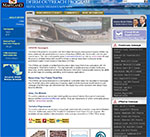 |
Maryland Flood Insurance Rate Maps Outreach Program
Federal Emergency Management Agency (FEMA)/Maryland Department of the Environment (MDE)
The State of Maryland in conjunction with the Federal Emergency Management Agency (FEMA) has been systematically updating Flood Insurance Rate Maps (FIRMs) for communities over the past several years. This program is designed to guide
homeowners/renters as well as
communities through the process of determining their current flood risk as well as future flood risk based on the preliminary Digital Flood Insurance Rate Maps (DFIRMs). |
 |
FloodSmart.gov: The Official Website of the National Flood Insurance Program
National Flood Insurance Program (NFIP)
In 1968, Congress created the National Flood Insurance Program (NFIP) to help provide a means for property owners to financially protect themselves. The NFIP offers flood insurance to homeowners, renters, and business owners if their community participates in the NFIP. Participating communities agree to adopt and enforce ordinances that meet or exceed FEMA requirements to reduce the risk of flooding. |
 |
Digital Coast
NOAA Coastal Services Center
While the need for good data forms the foundation of the website, the basic premise behind the effort is the understanding that data alone are not enough. Most people need help turning these data into information that can be used when making important decisions about coastal management. The Digital Coast does just that with: Data, Tools, Training, Stories from the Field (or case studies), and Apply It (a section devoted to showing users how to apply Digital Coast resources) |
Planning & Guidance |
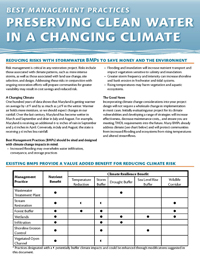
|
 Best Management Practices. Preserving Clean Water in a Changing Climate Best Management Practices. Preserving Clean Water in a Changing Climate
|
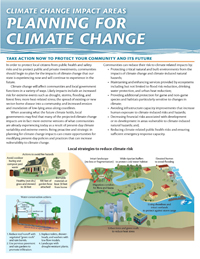
|
 Planning for Climate Change Planning for Climate Change
|
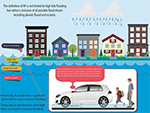
|  Nuisance Flood Plan Development Guidance Nuisance Flood Plan Development Guidance |
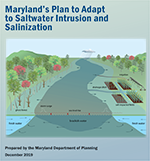
|  Maryland's Plan to Adapt to Saltwater Intrusion and Salinization Maryland's Plan to Adapt to Saltwater Intrusion and Salinization |
